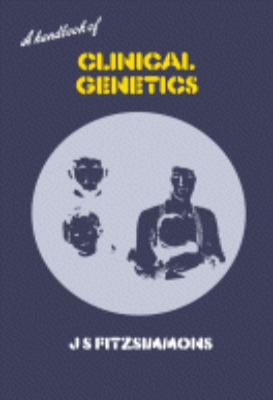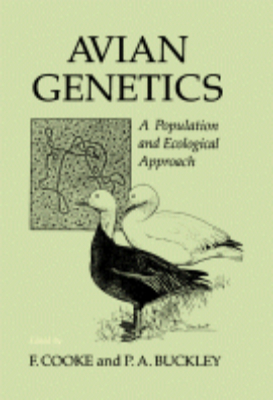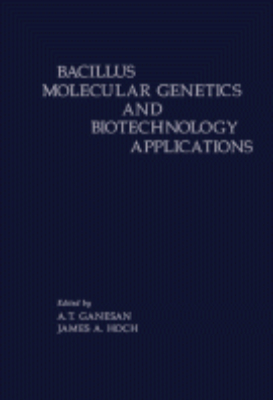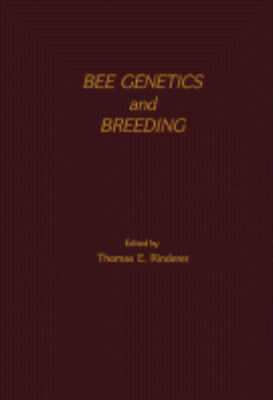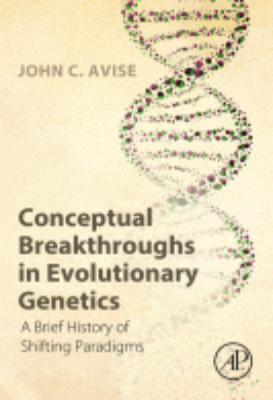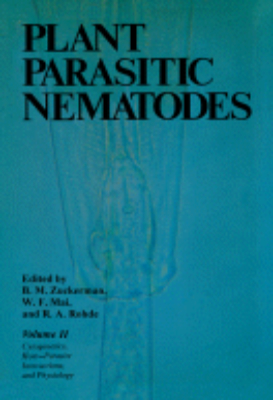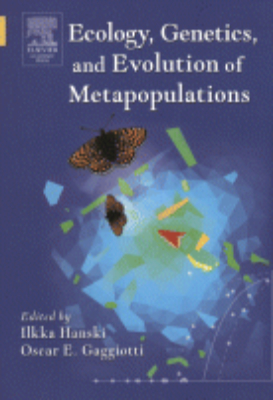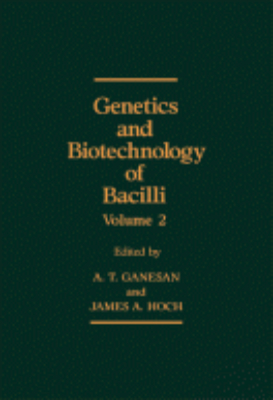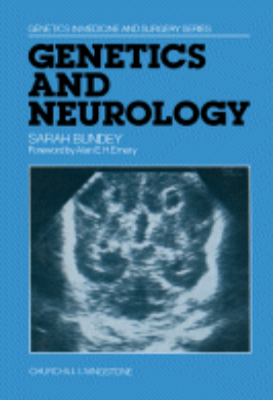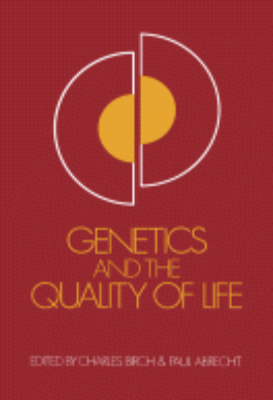E-Resources
A Handbook of Clinical Genetics
A Handbook of Clinical Genetics focuses on clinical genetics and the growing demand for genetic counseling. This book begins by introducing issues regarding changes in morbidity and mortality; fall in birth rate; advances in technology and treatment; and complex social changes. Other topics covered include genetic and environmental factors in disease; the genetic code; pedigree information; inheritance patterns; genetic counseling; prenatal diagnosis of genetic disease; special problems; and ethical issues and future developments. The last portion of this text is devoted to a glossary of unfamiliar medical terms, list of recommended books for further research and study, and appendices consist of a case on genetic counseling for Down's syndrome. This handbook is suitable for nurses, medical students, and doctors needing an introduction to clinical genetics.
Amphibian Cytogenetics and Evolution-key feature
This book appears at a time when molecular cytogenetics is positioned to make a significant impact upon evolutionary studies, enabling problems of chromosomal structure and change to be critically assessed. It is an up-to-date and comprehensive survey of the cytogenetics of a major class of animals, including all three amphibian orders, with chapters authored by international leaders in the field.Amphibian Cytogenetics and Evolution will be of interest to classical and molecular cytogeneticists, systematicists, evolutionary biologists, herpetologists, and anyone using amphibians in genetic research.
Avian Genetics
Avian Genetics: A Population and Ecological Approach is a collection of papers that deals with the study of birds in relation to the synthetic theory of evolution. This book studies the ecology, demography, behavior, and geographical distribution of birds; the text also discusses quantitative, chromosomal, biochemical, and population genetics. Part I reviews the various genetic interactions, including an analysis of DNA sequence variation. The different and newer techniques are compared such as the works of Sibley, Quinn, and White. Part II describes the molding genetic variation and covers topics such as inbreeding; gene flow and the genetic structure of populations; non-random mating; and the process of selection in natural populations of birds. Part III covers actual genetic case histories, including quantitative ecological genetics of great tits; genetic evolution of house sparrows; and presentation of evidence for sexual selection by female choice in the Arctic Skua. This book also presents future research in subjects such as the neutrality-selection controversy or genetics and conservation. This text can be beneficial for ecologists, ornithologists, animal conservationists, and population biologists studying birds.
Bacillus Molecular Genetics and Biotechnology Applications
Bacillus Molecular Genetics and Biotechnology Applications contains the proceedings of the Third International Conference on the Genetics and Biotechnology of Bacilli, held at Stanford University in Stanford, California on July 15-17, 1985. Contributors discuss the progress that has been made concerning the molecular genetics and biotechnology of Bacillus and cover topics related to transposons and plasmids, secretion, gene cloning, and gene expression. This volume is organized into five sections encompassing 39 chapters and begins with an overview of the origin and the state of molecular genetics, along with some of the contributions microbiology has made to fundamental biology. It then emphasizes the importance of scientifically based regulatory decisions and responsible industry actions for effective biotechnology regulation. The chapters that follow focus on Bacillus subtilis, touching on topics such as DNA recombination in plasmids, genetic system for stabilizing cloned genes, regulation of sporulation, and non-complementing diploids. The reader is methodically introduced to the secretion and maturation of subtilisin, cloning in streptomycetes, and genetic exchange and prospects for cloning in Clostridia. The book concludes with a chapter that describes an integrative and amplifiable secretion vector using the inducible promoter and signal peptide from the B. subtilis levansucrase (LS) gene. This book will be of interest to geneticists, microbiologists, and biotechnologists, as well as students and researchers in the fields of molecular biology and biochemistry.
Bee Genetics and Breeding
Bee Genetics and Breeding provides an overview of the state of knowledge in bee genetics and breeding. The book is organized into two parts. Part I deals with the scholarly issues of bee genetics. It is intended as a reference source for students of both bees and genetics. It could also serve as a text for university courses in bee genetics. Topics discussed include the evolution of eusocial insects; geographical variability and classification of honey bees; and behavioral and biochemical genetics of honey bees. Part II deals more specifically with the practical issues of bee breeding. The discussions include the quantitative genetics of honey bees; ways to define and measure honey-bee characteristics so that the "best" parents for honey-bee stock improvement programs can be selected; and mating designs. This section contains sufficient guidance for bee breeders to initiate or improve breeding programs. Apiculturalists generally will find this part especially interesting since the quality of their own bee stock depends on the skills and knowledge of the breeders who produce their queens.
Clinical Genetics
Clinical Genetics: Problems in Diagnosis and Counseling presents the proceedings of the Twelfth Annual New York State Health Department Birth Defects Symposium. The book provides practical information applicable to counseling situations for selected diagnoses and a summary of the limitations of diagnosis and counseling for genetic disorders. The text contains chapters devoted to the description of restriction enzyme site detection and prenatal diagnosis of hemoglobinopathy; counseling for mental retardation of unknown etiology, for idiopathic dysmorphic syndromes, and for psychiatric disorders; interpretation of prenatal cytogenetic diagnosis; preconceptual vitamin supplementation; and cystic fibrosis. Geneticists, clinicians, and physicians will find the book insightful.
Conceptual Breakthroughs in Evolutionary Genetics
Conceptual Breakthroughs in Evolutionary Genetics is a pithy, lively book occupying a special nichethe conceptual history of evolutionary genetics not inhabited by any other available treatment. Written by a world-leading authority in evolutionary genetics, this work encapsulates and ranks 70 of the most significant paradigm shifts in evolutionary biology and genetics during the century-and-a-half since Darwin and Mendel. The science of evolutionary genetics is central to all of biology, but many students and other practitioners have little knowledge of its historical roots and conceptual developments. This book fills that knowledge gap in a thought-provoking and readable format. This fascinating chronological journey along the many conceptual pathways to our modern understanding of evolutionary and genetic principles is a wonderful springboard for discussions in undergraduate or graduate seminars in evolutionary biology and genetics. But more than that, anyone interested in the history and philosophy of science will find much of value between its covers.
Cytogenetics Host-Parasite Interactions and Physiology
Plant Parasitic Nematodes, Volume II: Cytogenetics, Host-Parasite Interactions, and Physiology is a masterful reference work in nematology that includes information in ultrastructure, enzymology, and chemistry of body composition; culturing; virus transmission; biological races; and nature of plant resistance. This volume provides information about plant parasitic nematode genetics and cytology. It first explains the history and the advances in nematology, and then discusses the more specific topics about the biological processes involving nematodes. The discussions on host-parasite interactions, biochemistry, and physiology follow these topics. This book also presents useful information regarding free-living and animal parasitic nematodes. This treatise is written to provide an up-to-date reference source for students, lecturers, and research professionals in plant parasitology, specifically nematology, and related fields.
Cytogenetics of Aneuploids
Cytogenetics of Aneuploids deals with the cytogenetic aspects of aneuploidy in plants, emphasizing the trisomics, monosomics, and nullisomics and cytogenetics of substitution lines as well as alien additions and substitutions. An account of aneuploidy in animals and man is also given. This volume is organized into 12 chapters and begins with an overview of terminology and chromosomal formulas, along with a brief history of the cytogenetics of aneuploids as a field of enquiry. The next chapters review the entire literature on trisomics, their sources, cytology, transmission rates, genetics, morphology, anatomy, physiology, and biochemistry. The discussion then shifts to monosomics and nullisomics, including their sources and cytology as well as breeding behavior, morphology, and genetic studies. Other uses of monosomics and nullisomics are considered. The following chapters deal with intervarietal substitutions and alien additions and substitutions, emphasizing different methods of producing substitution lines and their utility in genetic analysis and practical plant breeding programs. The book concludes by describing special features of aneuploidy in animals and highlighting specific cases of aneuploidy in the animal kingdom. This book will be of interest to plant breeders and geneticists.
Cytogenetics of Cells in Culture: 1964
Cytogenetics of Cells in Culture is a compendium of papers that deals with techniques to detect patterns of DNA replication, cellular control mechanisms, and chromosome analyses with automated instrumentation. Some papers discuss the effects of cell hybridization and of noxious substances such as radiation, chemical agents, and viruses on chromosomal patterns. Other papers focus on the influence of altered chromosomal complement on the survival of cells to long-term tissue culture or to ionizing radiation treatment. A couple of papers points out that naturally occurring chromosomal abnormalities in mammalian populations are relatively rare and are not necessarily associated with physical defects or disease. One paper notes that chromosomes in cells with different functions have different patterns of replication in which the changes are small and hidden. The chromosomes will usually be neutralized showing little of the characteristic pattern of replication or condensation during the early cleavage stages, that will later change into differentiated characteristic ways for each tissue type. Another paper describes chromosome breakage associated with viruses and DNA inhibitors. The compendium can prove beneficial for biochemists, micro-biologists, cellular researchers, and academicians involved in the study of cellular biology or physiology.
Cytogenetics of Cells in Culture: Volume 3 1964
Cytogenetics of Cells in Culture is a compendium of papers that deals with techniques to detect patterns of DNA replication, cellular control mechanisms, and chromosome analyses with automated instrumentation. Some papers discuss the effects of cell hybridization and of noxious substances such as radiation, chemical agents, and viruses on chromosomal patterns. Other papers focus on the influence of altered chromosomal complement on the survival of cells to long-term tissue culture or to ionizing radiation treatment. A couple of papers points out that naturally occurring chromosomal abnormalities in mammalian populations are relatively rare and are not necessarily associated with physical defects or disease. One paper notes that chromosomes in cells with different functions have different patterns of replication in which the changes are small and hidden. The chromosomes will usually be neutralized showing little of the characteristic pattern of replication or condensation during the early cleavage stages, that will later change into differentiated characteristic ways for each tissue type. Another paper describes chromosome breakage associated with viruses and DNA inhibitors. The compendium can prove beneficial for biochemists, micro-biologists, cellular researchers, and academicians involved in the study of cellular biology or physiology.
Dento/Oro/Craniofacial Anomalies and Genetics
Dental defects may be the physical expression of genetic defects, and so they can often be seen in a variety of syndromes associated with malformations of organs. However, dental defects are often not recognized, identified, nor characterised despite representing a possible diagnostic sign for an undiagnosed condition. This book addresses this gap by providing an understanding of dental genetics and its developmental biology counterpart. With approximately seventy well-illustrated examples, the authors present the clinical oro-facial manifestations accompanying various syndromes, providing the necessary knowledge for diagnostic purposes, as well as giving insight into recent development for each specific condition. The clarity and format of this book make it an ideal support guide both in the clinic and while conducting research.
Drug Discovery in Cancer Epigenetics
Drug Discovery in Cancer Epigenetics is a practical resource for scientists involved in the discovery, testing, and development of epigenetic cancer drugs. Epigenetic modifications can have significant implications for translational science as biomarkers for diagnosis, prognosis or therapy prediction. Most importantly, epigenetic modifications are reversible and epigenetic players are found mutated in different cancers; therefore, they provide attractive therapeutic targets. There has been great interest in developing and testing epigenetic drugs, which inhibit DNA methyltransferases, histone modifying enzymes or chromatin reader proteins. The first few drugs are already FDA approved and have made their way into clinical settings. This book provides a comprehensive summary of the epigenetic drugs currently available and aims to increase awareness in this area to foster more rapid translation of epigenetic drugs into the clinic.
Ecology, Genetics and Evolution of Metapopulations
Ecology, Genetics and Evolution of Metapopulations is acollection of specially commissioned articles that looks at fragmented habitats, bringing together recent theoretical advances and empirical studies applying the metapopulation approach. Several chapters closely integrate ecology with genetics and evolutionary biology, and others illustrate how metapopulation concepts and models can be applied to answer questions about conservation, epidemiology, and speciation. The extensive coverage of theory from highly regarded scientists and the many substantive applications in this one-of-a-kind work make it invaluable to graduate students and researchers in a wide range of disciplines.
Emery and Rimoin’s Principles and Practice of Medical Genetics
For decades, Emery and Rimoins Principles and Practice of Medical Genetics has provided the ultimate source for practicing clinicians to learn how the study of genetics can be integrated into practice. With almost 5,000 pages of detailed coverage, this fully online sixth edition of the classic reference adds the latest information on prenatal diagnosis, genetic screening, genetic counseling, and treatment strategies to complete its coverage of the growing field for medical students, residents and physicians involved in the care of patients with genetic conditions. Clinically oriented information is supported by expanded sections on basic principles of genetics, research approaches, and analytics to embrace the evolving population of students, researchers, and practitioners who are integrating their work to provide advanced diagnosis, prevention and treatment of human disease. With advances in high-throughput technologies propelling the closer integration of lab and clinical work, this edition bridges the gap between high-level molecular genetics and clinical application.
Epigenetics and Dermatology
Epigenetics and Dermatology explores the role of epigenetics in the pathogenesis of autoimmune-related skin diseases and skin cancer. Leading contributors cover common and uncommon skin conditions in which extensive epigenetic research has been done. They explain how environmental exposures (chemicals, drugs, sunlight, diet, stress, smoking, infection, etc.) in all stages of life (from a fetus in-utero to an elderly person) may result in epigenetic changes that lead to development of some skin diseases in life. They also discuss the possibilities of new and emergent epigenetic treatments which are gradually being adopted in management of various skin diseases. Chapters follow a conventional structure, covering fundamental biology of the disease condition, etiology and pathogenesis, diagnosis, commonly available treatments, and epigenetic therapy where applicable.
Epigenetics in Human Disease
Epigenetics is one of the fastest growing fields of sciences, illuminating studies of human diseases by looking beyond genetic make-up and acknowledging that outside factors play a role in gene expression. The goal of this volume is to highlight those diseases or conditions for which we have advanced knowledge of epigenetic factors such as cancer, autoimmune disorders and aging as well as those that are yielding exciting breakthroughs in epigenetics such as diabetes, neurobiological disorders and cardiovascular disease. Where applicable, attempts are made to not only detail the role of epigenetics in the etiology, progression, diagnosis and prognosis of these diseases, but also novel epigenetic approaches to the treatment of these diseases. Chapters are also presented on human imprinting disorders, respiratory diseases, infectious diseases and gynecological and reproductive diseases. Since epigenetics plays a major role in the aging process, advances in the epigenetics of aging are highly relevant to many age-related human diseases. Therefore, this volume closes with chapters on aging epigenetics and breakthroughs that have been made to delay the aging process through epigenetic approaches. With its translational focus, this book will serve as valuable reference for both basic scientists and clinicians alike.
Epigenetics in Psychiatry
Epigenetics in Psychiatry covers all major areas of psychiatry in which extensive epigenetic research has been performed, fully encompassing a diverse and maturing field, including drug addiction, bipolar disorder, epidemiology, cognitive disorders, and the uses of putative epigenetic-based psychotropic drugs. Uniquely, each chapter correlates epigenetics with relevant advances across genomics, transcriptomics, and proteomics. The book acts as a catalyst for further research in this potentially very important and useful area of psychiatry. The elucidation of basic principles of epigenetic biology points to the creation of more optimal and effective therapies for major classes of psychiatric disease. In this regard, epigenetic therapy, the use of drugs to correct epigenetic defects, may help in the pharmacotherapy of patients with these disorders. With time, such advances may eventually point to replacements for psychotropic drugs presently of symptomatic value and low efficacy. Moreover, there is evidence to suggest that other forms of treatment commonly used in the management of psychiatric disorders, like psychotherapy and electroconvulsive therapy, may also act by epigenetic mechanisms.
Eukaryotic Cell Genetics
Eukaryotic Cell Genetics reviews the state of knowledge in somatic cell genetics. The book begins by discussing the development of somatic cell genetics, focusing on the estimation of mutation rates in mammalian cells, with frequent reference to the use of drug resistance as a selective character. It then considers some of the specific properties of such variants in order to understand their molecular basis. The subsequent chapters examine the properties of specific types of auxotrophic variants; the means by which eukaryotic cells may be reassembled to give rise to viable cellular composites; gene regulation in eukaryotic organisms; and chromosome mapping. The discussions also include differentiation in cultured cells; neoplastic transformation; the modulation of gene expression in cultured cells; mutation induction in cultured cells; applications of cell culture; and the mechanism of cellular aging. This book is intended for researchers in the fields of genetics and molecular biology, nonspecialists interested in what is happening in a very exciting area of biology, and students at the graduate level in cell biology.
Experimental Pharmacogenetics
Experimental Pharmacogenetics: Physiopathology of Heredity and Pharmacologic Responses reviews heritable factors in animals recognized by the use of drugs and hereditary defects that alter drug responses, including hereditary aspects of the response to drugs in mice and variety of other animal species. This book focuses on pharmacogenetics, which is the study in animal species of genetically determined variations that are revealed by the effects of drugs. The genetics of bacteria, human geneticists classifying man according to pharmacologic assays, and cytologists observing drugs that influence heredity are also elaborated. This publication is beneficial to pharmacologists and geneticists concerned with physiology, pathology, and biochemistry.
Flow Cytogenetics-key feature
This is the first book to be devoted entirely to the application and development of flow techniques in cytogenetics. It provides comprehensive information on the use of flow cytometry and sorting for chromosome classification and purification. Cytogenetics and molecular biologists will find this book an invaluable reference source.
Genetics and Biotechnology of Bacilli: Volume 1
Genetics and Biotechnology of Bacilli contains the proceedings of the Second International Conference on Genetics and Biotechnology of Bacilli, held at Stanford University in Stanford, California, on July 6-8, 1983. Contributors discuss the progress that has been made concerning the genetics and biotechnology of Bacillus and focus on topics built around the themes of chromosomal organization, secretion, transcription, gene cloning, gene expression, and synthesis of sporulation-associated products. This text is organized into 33 chapters and begins with an overview of bacteriophage lambda biology, with emphasis on lambda insertion, controlled DNA rearrangements, operator-promoter function, and the evolution of extrachromosomal elements. The reader is then introduced to genetic mapping of cloned ribosomal RNA genes, gene amplification in Bacillus subtilis, beta-lactamases of Bacilli, and the role of a Bacillus secretion vector in the secretion of foreign gene products. This book also gives an account of various facets of Bacillus biology, especially in the identification of promoters, cloning of foreign genes, and selection of expressed gene products. This reference material is a valuable resource for geneticists, microbiologists, and biotechnologists, as well as students and researchers in the fields of molecular biology and biochemistry.
Genetics and Biotechnology of Bacilli: Volume 2
Genetics and Biotechnology of Bacilli, Volume 2 is a collection of papers from the "Fourth International Conference on Bacilli" held in California on June 21-24, 1987. One paper reviews the results of cloning and characterization of genes for secreted enzyme and of genes that control the expression of secreted enzymes in relation with other prokaryotic regulatory systems. Other papers tackle the regulation of gene expression during sporulation, the sigma factors, bacterial toxins, and antibiotic resistance genes. One paper reports that three genes responsible for the code for peptides found in BT cuboidal crystals have been successfully cloned. The three codes have different toxic characteristics in relation to tobacco hornworm larvae or mosquito larvae. Other papers examine replication. Such examination pertains to the two levels of control on the chromosome involved in DNA replication, or to the possible functional importance that several membranes associated DNA subcomplexes can have in Bacillus subtilis, where one of these appear to control initiation. Other papers discus secretion and extracellular enzymes, as well as, the different genetic systems and methods. This collection can prove beneficial for biochemists, micro-biologists, cellular researchers, and academicians involved in the study of cellular biology, microchemistry, or toxicology.
Genetics and Biotechnology of Bacilli: Volume 3
Genetics and Biotechnology of Bacilli, Volume 3 covers the proceedings of the Fifth International Conference on Genetics and Biotechnology of Bacilli, held on July 9-12, 1989 at the Asilomar Conference Center, Pacific Grove, California. It summarizes the remarkable progress made in the genetics and biotechnology fields of Bacilli. It is organized into four parts, encompassing 43 chapters, which focus on gene regulation and structure, enzyme structure, Bacillus thuringiensis toxins, and stationary phase gene regulation. Part I covers topics related to gene regulation and structure of Bacilli, such as control of gene expression, mutation, genetic organization, DNA sequence analysis, and identification of transcript units. It also discusses gene replication in Bacillus subtilis plasmids, levanase operon of B. subtilis, and characterization of global regulon in B. subtilis. The next part of this book focuses on the structure of various enzymes found in B. subtilis, including alpha amylases, subtilisin, alkaline phosphatase, and levansucrase. Part III discusses the generation of functional B. thuringiensis toxin hybrid genes, regulation of crystal protein gene promoters, toxicity of B. thuringiensis delta-endotoxin, and insecticidal activity of chimeric protoxins. The concluding part covers the aspects of signal transduction, regulation of differential gene expression during B. subtilis sporulation, and gene cloning and deletion for extracellular proteases of B. subtilis. It also discusses genetic and biochemical aspects of protein phosphorylation; properties of B. subtilis spores; control of stationary phase gene expression; and the novel regulatory gene, senS, of B. subtilis. This book is a valuable source of information for microbiologists, research biologists, and Bacilli enthusiasts.
Genetics and Evolution of Infectious Disease
Genetics and Evolution of Infectious Diseases is at the crossroads between two major scientific fields of the 21st century: evolutionary biology and infectious diseases. The genomic revolution has upset modern biology and has revolutionized our approach to ancient disciplines such as evolutionary studies. In particular, this revolution is profoundly changing our view on genetically driven human phenotypic diversity, and this is especially true in disease genetic susceptibility. Infectious diseases are indisputably the major challenge of medicine. When looking globally, they are the number one killer of humans and therefore the main selective pressure exerted on our species. Even in industrial countries, infectious diseases are now far less under control than 20 years ago. The first part of this book covers the main features and applications of modern technologies in the study of infectious diseases. The second part provides detailed information on a number of the key infectious diseases such as malaria, SARS, avian flu, HIV, tuberculosis, nosocomial infections and a few other pathogens that will be taken as examples to illustrate the power of modern technologies and the value of evolutionary approaches.
Genetics and Molecular Biology of Muscle Adaptation
This title is directed primarily towards health care professionals outside of the United States. It starts with the origin of life and ends with the mechanisms that make muscles adapt to different forms of training. In between, it considers how evidence has been obtained about the extent of genetic influence on human capacities, how muscles and their fibres are studied for general properties and individual differences, and how molecular biological techniques have been combined with physiological ones to produce the new discipline of molecular exercise physiology. This is the first book on such topics written specifically for modules in exercise and sport science at final year Hons BSc and taught MSc levels.
Genetics and Morphogenesis in the Basidiomycetes
Genetics and Morphogenesis in the Basidiomycetes documents the proceedings of a symposium on Genetics and Morphogenetic Studies of Basidiomycetes held during the Second International Mycological Congress. The symposium was organized as a memorial symposium to honor the many contributions of John Robert Raper, which included the hormonal control of sexual development in fungi; the biological effects of beta radiation; and the genetic control of the incompatibility systems and morphogenesis of sexuality in higher basidiomycetes. The contributions made by researchers at the symposium include studies on control of development by genes of the incompatibility system; the genetic structure of the incompatibility factors of the higher basidiomycetes; and meiosis and recombination in basidiomycetes. Subsequent chapters deal with the evolution of incompatibility; the incompatibility system as a model for the regulation of cell differentiation; morphogentic processes in Schizophyllum commune and Coprinus lagopus; and the regulatory processes which control fruiting.
Genetics and Neurology
Genetics and Neurology focuses on disorders that affect the nervous system, including atrophies, neuropathies, and tumors. The book first examines malformations of the central nervous system, phacomatoses and tumors, and cerebral degenerative disorders of childhood. Topics include malformations of the corpus callosum and neighboring structures; abnormalities of closure of neural tube; spongiform leucodystrophy; and tumors of the nervous system. The text then takes a look at extrapyramidal disorders and dyskinesias and muscle disorders. The publication elaborates on spinal muscular atrophies (SMAs), cerebellar and spinocerebellar ataxias, and hereditary neuropathies. Discussions focus on hereditary motor and sensory neuropathies of infancy and early childhood; peripheral neuropathies and lipid disorders; and congenital cerebellar ataxias. The book also discusses spastic paraplegias and multifactorial inheritance and neurological diseases. The text is a valuable reference for readers interested in genetics and neurology.
Genetics and the Quality of Life
Genetics and the Quality of Life covers the papers and report of a consultation on Genetics and the Quality of Life, held in Zurich on June 25-29, 1973, organized by the sub-unit on Church and Society of the World Council of Churches in cooperation with the Christian Medical Commission. The book focuses on the interrelation of genetics and quality of life. The selection first elaborates on genetics and moral responsibility and ethics and the new biology. Discussions focus on breakdown of values, genetically determined debility versus socially determined debility, ethical problems, and genetic inequality and moral responsibility. The text then examines ethical issues raised by eugenics, judging the social values of scientific advances, ethical problems raised by genetics, and problems raised by eugenics in Africa. Topics include the right to an adequate physical and mental endowment, genetic engineering, euphenics, constraints imposed by genetics, fertilization of human ova in vitro, and ethical questions in eugenics. The manuscript reviews findings on genetics and the quality of life, sociogenetic problems and public opinion, social and ethical problems in caring for genetically handicapped children, ethical problems in genetic counselling, and psychological issues in counselling the genetically handicapped. The selection is a dependable source of information for researchers interested in the connection of genetics and quality of life.
Genetics Environment and Behavior
Genetics, Environment, and Behavior: Implications for Educational Policy is a collection of papers from the "Genetic Endowment and Environment in the Determination of Behavior" workshop in New York in October 1971. The book discusses the relationships between genetic characteristics and behavior as being significant in understanding human behavior and learning. The text also considers the different approaches made by geneticists and psychologists on this subject. Several papers review, in terms of both quantitative and qualitative analysis, the role that genetics and the environment play in determining behavior. One paper explains the possible role of genetic determination in behaviors as found in mice and men that show high probabilities of heritabilities. Another paper tackles biochemical genetics and explains the evolution of human behavior by addressing the enzyme variations in human brains and the role of language and culture. The book also cites gene-environment interactions and the variability that can be found in behavior with references to the works of Ginsburg (1967) and Vale and Vale (1969). One paper comments on the future of human behavior genetics, highlighting the distinction between what should happen and what most probably will happen. This text is suitable for sociologists, behavioral scientists, geneticists, educators, and students in psychology, psychiatry, and related branches of medicine.

